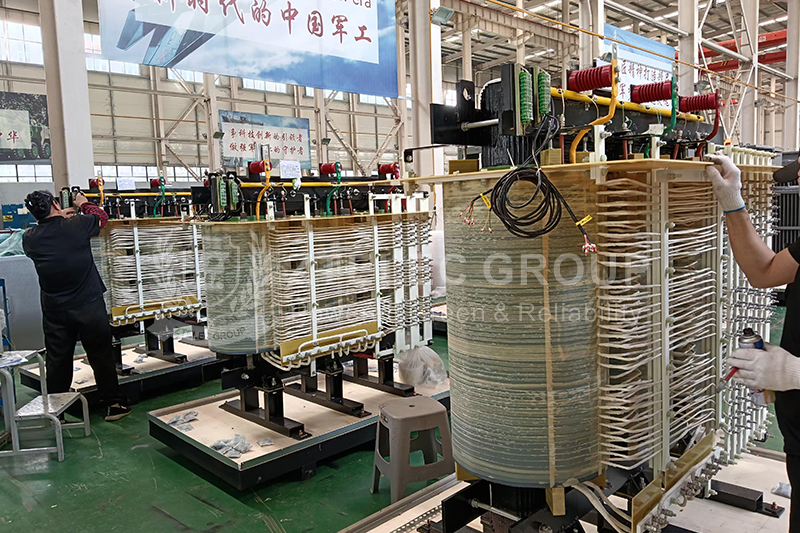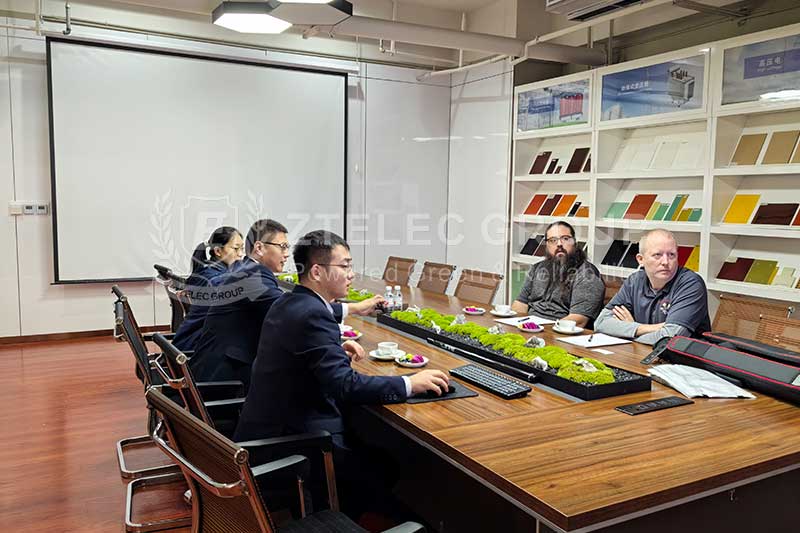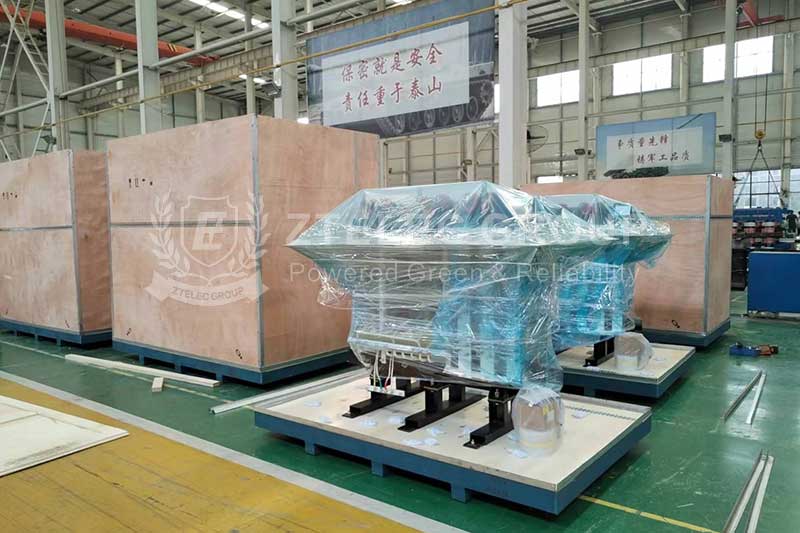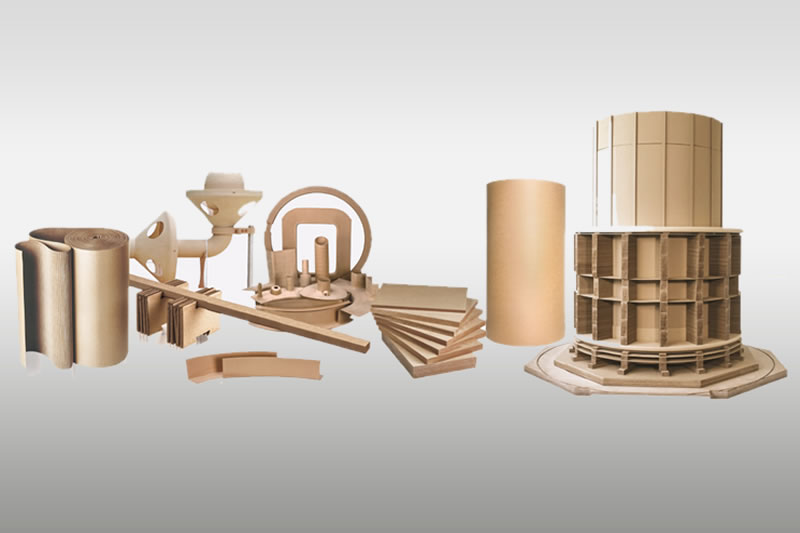What is the difference between single-phase transformer and three-phase transformer
2024-07-01 11:30 | By: ZTELEC-www.ztelecgroup.com | 142click
waht is single phase transformer
A single-phase transformer is an electrical device that operates on single-phase power to transfer electrical energy from one circuit to another through electromagnetic induction. It’s designed to either increase (‘step up’) or decrease (‘step down’) voltage levels between circuits without changing the frequency of the current.
Here’s a brief overview of its components and working principle:
Core: Made of magnetic iron, serves as the magnetic part of the transformer.
Windings: Consist of copper or aluminum coils, serving as the electrical part. The primary winding receives AC power, and the secondary winding delivers it after transformation.
Operation: When AC flows through the primary winding, it generates an alternating magnetic field, which induces a voltage in the secondary winding with the same frequency as the primary side.
Efficiency: It is a high-efficiency device with low losses, mainly because there’s no mechanical friction involved in its operation.
Single-phase transformers are commonly used in residential areas for stepping down the high voltage from power lines to a safer level for home use
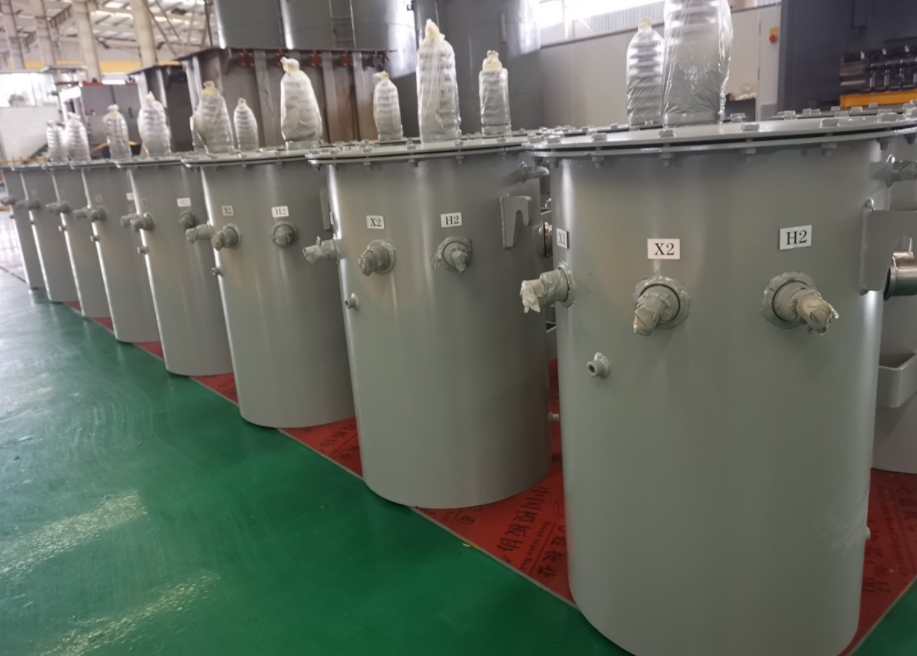
Working Principle of Single Phase Transformer
The working principle of a single-phase transformer is based on Faraday’s Law of Electromagnetic Induction and mutual inductance. Here’s a step-by-step explanation:
AC Voltage Application: When an alternating current (AC) is applied to the primary winding, it creates an alternating magnetic field around the winding.
Magnetic Field Induction: This magnetic field passes through the transformer’s core, which is typically made of laminated silicon steel to reduce eddy current losses.
Voltage Induction in Secondary Winding: The alternating magnetic field induces a voltage in the secondary winding. This happens because the magnetic field lines cut across the secondary winding, generating an electromotive force (EMF) according to Faraday’s Law.
Voltage Transformation: The ratio of the number of turns in the primary winding to the number of turns in the secondary winding (turns ratio) determines whether the transformer will step up or step down the voltage.
Energy Transfer: The electrical energy is transferred from the primary circuit to the secondary circuit through the magnetic field, without any direct electrical connection between the two circuits.
Load Current: If a load is connected to the secondary winding, a current will flow through the load, delivering electrical power to the load.
The formula for the induced EMF (E) in a transformer winding is given by Faraday’s Law as:
E=−NdtdΦ
where:
( E ) is the induced EMF in volts
( N ) is the number of turns in the winding
( Phi ) is the magnetic flux in webers
(
rac{dPhi}{dt} ) is the rate of change of magnetic flux
The negative sign indicates that the induced EMF creates a current whose magnetic field opposes the change in magnetic flux through the winding, as per Lenz’s Law. This principle allows single-phase transformers to efficiently transfer power while maintaining the same frequency between the input and output.
Advantages and disadvantages of single-phase transformers
Single-phase transformers are commonly used in residential and light commercial applications. Here are some of their advantages and disadvantages:
Advantages:
Simple Construction: They have a straightforward design which makes them easy to maintain.
Low Cost: Generally less expensive to manufacture and purchase compared to three-phase transformers.
High Efficiency: They operate with high efficiency and have low energy losses.
Reliable Operation: Known for their reliability in operation.
Reduced Standby Costs: The cost of standby unit transformers is lower, which can be advantageous in systems where multiple transformers are used.
Disadvantages:
Limited Power Output: They are not suitable for high voltage or high current applications and have a limited power output compared to three-phase transformers.
Increased Maintenance Cost: Over time, the maintenance cost can become higher.
Space Requirements: They require more space for installation compared to a single three-phase transformer.
Increased Fault Occurrence: When operating in parallel, there’s a higher chance of fault occurrence.
These factors make single-phase transformers ideal for certain applications while less suitable for others, particularly where large-scale power distribution and heavy machinery operation are involved.
What are the types of transformers in the power grid?
Transformers are crucial components in the power grid, and they come in various types to serve different functions. Here are some of the main types of transformers used in the power grid:
Step-Down Transformer: Converts high voltage from the primary side to low voltage on the secondary coil, typically used in power distribution systems.
Step-Up Transformer: Increases the voltage from the primary side to a higher voltage on the secondary side, mainly used in electrical power distribution.
Single-Phase Transformer: Used for residential and light commercial applications, operating on single-phase power.
Three-Phase Transformer: Used in industrial and large commercial applications, operating on three-phase power, which is more efficient for high power levels.
Power Transformer: Designed for high-voltage transmission networks to step up or step down voltage levels, with ratings like 400kv, 200kv, 110kv, 66kv, 33kv.
Distribution Transformer: Steps down the voltage for distribution to residential or commercial users.
Current Transformer: Used for measuring current and providing a safe way to monitor electrical current flowing in an AC transmission line.
Isolation Transformer: Provides electrical isolation without stepping the voltage up or down, used for safety and noise reduction.
Potential Transformer: Also known as a voltage transformer, used for metering and protection in high-voltage circuits.
Instrument Transformer: Includes current and potential transformers, used for measurement and protective relay functions in power systems.
Air Core Transformer: Uses an air core rather than a ferromagnetic core, typically used in radio-frequency applications.
Iron Core Transformer: Has an iron core, used in applications where efficiency and power are a concern.
Ferrite Core Transformer: Uses a ferritic core, suitable for high-frequency applications.
Toroidal Core Transformer: Features a toroidal (ring-shaped) core, which offers efficiency and minimal electromagnetic interference.
Autotransformer: A type of transformer with only one winding that acts as both the primary and secondary winding.
Grounding or Earthing Transformer: Used to provide a return path for current in a three-phase system.
Each type of transformer is suited for specific applications and power ratings, and they play a vital role in the efficient transmission and distribution of electrical power across the grid
Application of single-phase transformer
Single-phase transformers are widely used in various applications due to their ability to step up or step down voltage levels. Here are some common applications:
Residential Power Distribution: They are used to step down the high voltage from power lines to a safer level for home use, powering household appliances and lighting.
Commercial Buildings: In commercial settings, they supply power to lighting systems, heating and air conditioning units, and other electrical installations.
Industrial Control Systems: They are used in control panels to provide the required voltage for control circuits and automation systems.
Electronic Devices: Single-phase transformers are used in electronic devices and circuits, such as AC/DC rectifiers, to provide the necessary voltage for operation.
Voltage Regulation: They can be used to adjust voltage levels to protect sensitive equipment from voltage surges or drops.
Isolation: They provide electrical isolation between circuits, which is important for safety and noise reduction in sensitive electronic applications.
These transformers are essential in ensuring that electrical power is safely and efficiently distributed for use in various low-power applications.
The difference between single-phase transformer and three-phase transformer
The main differences between a single-phase transformer and other transformers, particularly three-phase transformers, are based on their construction, application, and the way they supply power:
Supply Type:
A single-phase transformer provides a single-phase supply using two conductors: Phase (Line) and Neutral (1P + 1N).
A three-phase transformer provides a three-phase supply using three phases (Lines) and a neutral conductor if needed (3P+1N).
Construction:
Single-phase transformers have a simpler construction with one pair of coils (primary and secondary) wrapped around the core.
Three-phase transformers can be more complex, consisting of three sets of coils, either interconnected in a single unit or as three separate transformers working together.
Applications:
Single-phase transformers are typically used in residential areas and for lighter loads, such as home and domestic applications.
Three-phase transformers are used in industrial and commercial settings where large amounts of power are required, and they can supply both single-phase and three-phase voltage levels.
Efficiency and Cost:
Single-phase transformers are generally less costly and have lower capacity, making them suitable for applications with less demand.
Three-phase transformers are more efficient for high power levels and are economical in the long run, especially for large-scale power distribution.
These differences make each type of transformer suitable for specific situations, ensuring efficient power distribution and utilization in various electrical systems.
How much is a single-phase transformer
The cost of a single-phase transformer can vary significantly based on several factors such as the transformer’s capacity, voltage rating, size, and the materials used in its construction. Generally, for residential and light-commercial applications, the prices can range from a few hundred to several thousand dollars.
For example, prices in the Philippines can range from approximately ₱45,000.00 to ₱269,000.00. In terms of power transformers with low tension control (LTC), the costs can be quite substantial, with small power transformers (10MVA or lower) starting at around $600,000.
It’s important to note that these prices are indicative and can change based on market conditions, specific design requirements, and additional features such as energy efficiency ratings or customizations. For an accurate quote, it’s best to consult with transformer manufacturers or suppliers with your specific requirements in mind.
Where can I buy single phase transformers?
You can purchase single-phase transformers from various suppliers and distributors. Here are some options you can consider:
Grainger Industrial Supply: They offer a range of single-phase transformers suitable for high-current and industrial applications, including energy-efficient and harsh environment transformers.
Sola/Hevi-Duty Products: Specializes in general purpose, low temperature rise, K-factor, automation, hazardous location, and buck-boost transformers.
GlobalSpec: Provides a platform to find numerous suppliers of single-phase transformers with a comprehensive catalog of manufacturers and distributors.
Surplus Record: A marketplace for new, used, and re-built electric transformers, including single-phase types.
Before making a purchase, it’s recommended to compare the products based on your specific requirements such as voltage rating, VA rating, and any additional features like energy efficiency or environmental resistance. It’s also advisable to check for availability, warranty, and support services offered by the supplier.
You can also contact the transformer manufacturer, so that the transformer you get is cheap and has a stable supply. You can contact us, ztelecgroup transformer manufacturer, they have many types of power transformers.
tags:insulation failure transformertransformer short circuittransformer overheatingtransformer overloadtransformer maintenance
- more+releated article
- 2026-01-04Common Power Transformer Faults: Causes, Solut
- 2025-12-312026 New Year Holiday Notice
- 2025-12-31Operation, Maintenance, and Service Life Manag
- 2025-12-30How to Select a 100 kVA–500 kVA Distribution
- 2025-12-29The Impact of NHN NMN Composite Insulation on
- 2025-12-26Practical Application of GPO-3 Insulation Boar
- 2025-12-2510kV Transformer Replacement Timeline: Install
- 2025-12-25Low Smoke EN45545 GPO3 UPGM203 Laminated Board
- 2025-12-24Merry Christmas — ZTelecgroup Christmas Cele
- 2025-12-24How to Select a Suitable 50kVA–500kVA Distri

